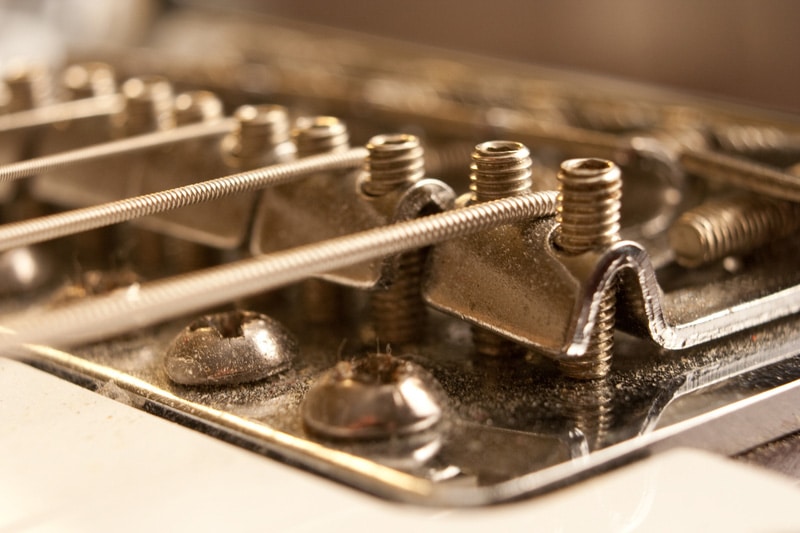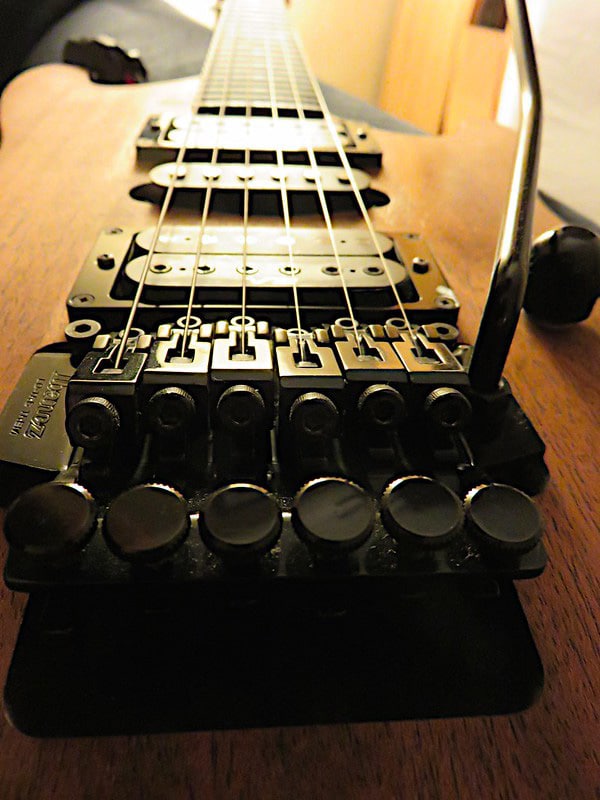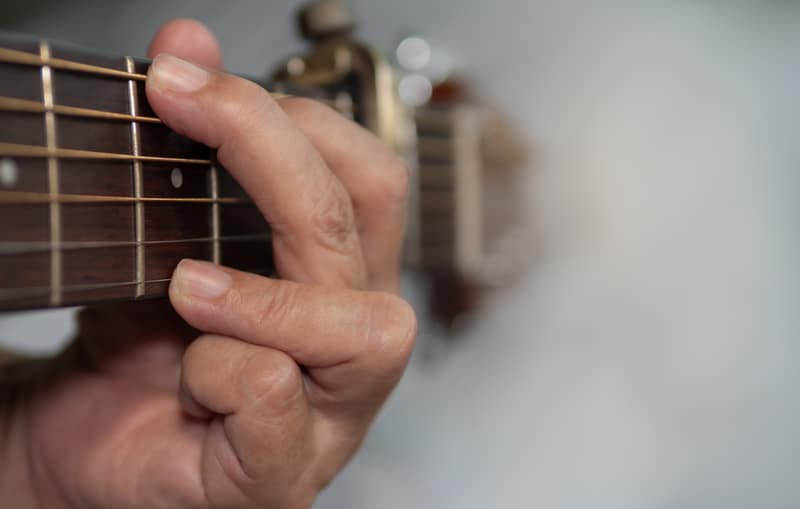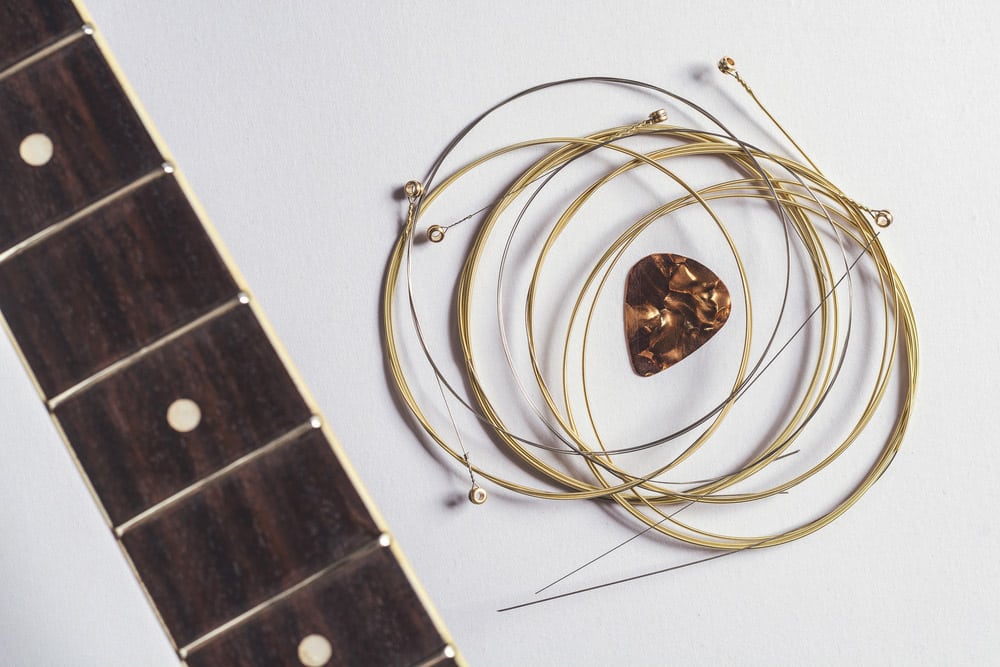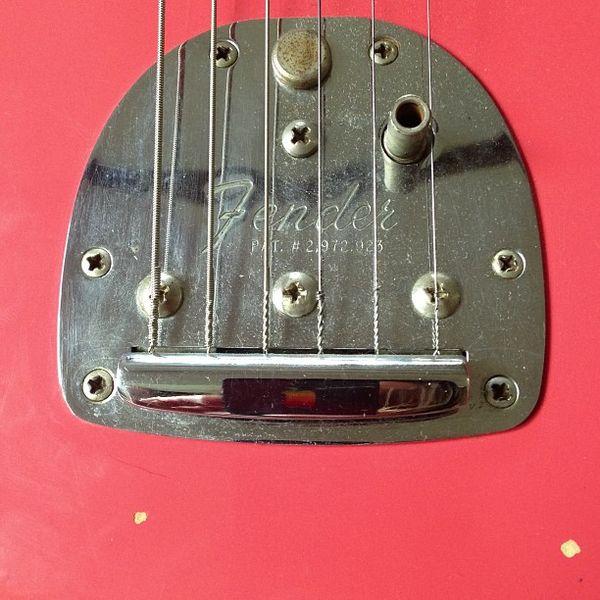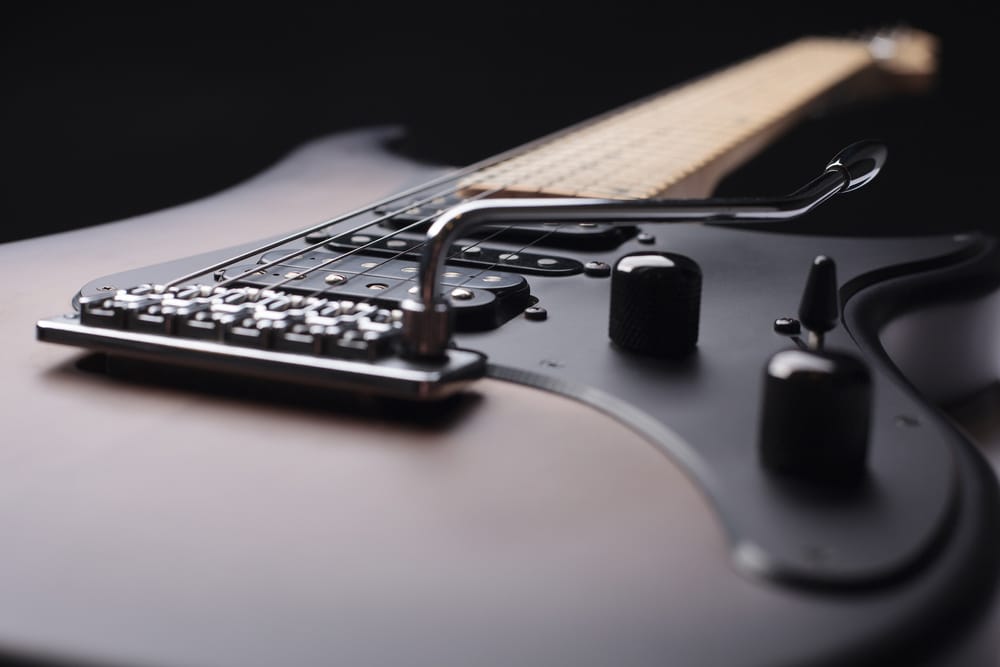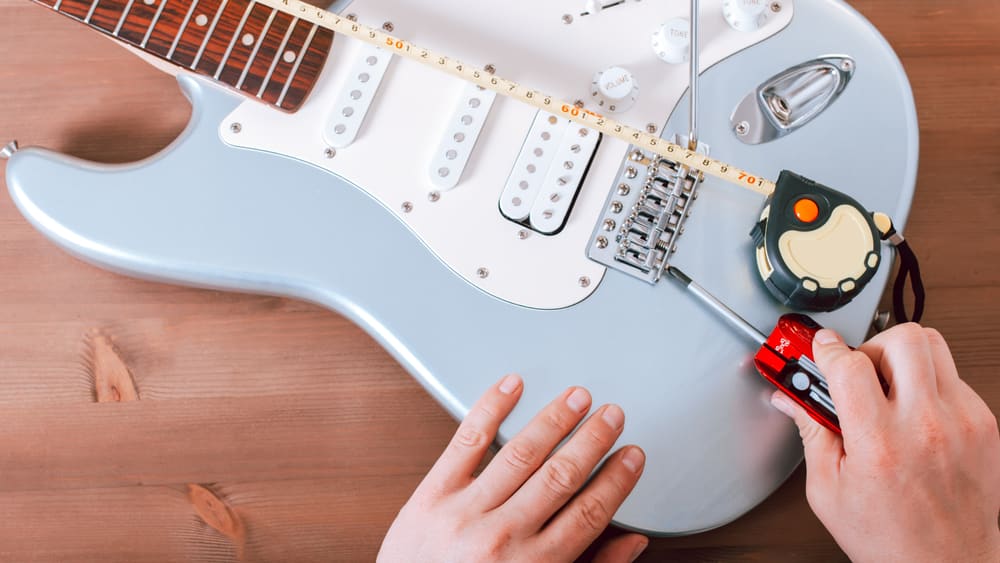
The floating tremolos are widely used on guitars, especially when guitarists want to adjust the pitch up as well as in a downward position. That’s because it’s easier to move the pitch, and with this tremolo, the bridge suspends and floats in air, which makes it suitable for playing the loud and rock music genres.
While these tremolos are convenient to set up and use, they also have some tuning problems that you should know!
Solving Common Tuning Problems With A Floating Tremolo
- Bridge Adjustment
Bridge height adjustment is the most important consideration when there is a tuning error. In particular, you must ensure that the bridge isn’t loose and there are no adjustment errors. The bridge must be adjusted at a higher height to make sure the tuning is correct.
- Installation
The second potential solution is to check the installation of your tremolo to fix the tuning issues. It’s recommended that you follow the instructions mentioned in tremolo’s user manual. On the other hand, if you don’t have a user manual, you can follow the below-mentioned steps to install and set up the tremolo to optimize the tuning;
-
- First of all, connect the tremolo without any strings and springs to make sure it moves freely, and don’t forget to check the knife edges (they must be sharp and intact)
- String the guitar but make sure you are using the correct string size
- Connect the 12-grub screws at the most comfortable position and suitable radius to make sure they don’t jab your hand as you play
- Now, play some harmonics on the 12th fret and compare it to the fretted note of the 12th fret. In case it’s sharp, you must move your saddle in a backward position, but if it’s flat, the saddle must be moved forward
- Check and optimize the string height with the bridge (the height is different for every music genre, so choose the height accordingly)
- Now, retune the guitar and set the saddle to make sure it doesn’t move
- Tilt the tremolo forward at 3.2mm as it produces more lift as you pull up the tremolo
- Tighten the spring screws installed on the back side of the tremolo cavity
- Now, the installation is done, and tuning will work optimally
- The Strings Are Returning Flat After Pulling Up & Sharp After The Dive
If you are using floating tremolo and the strings are acting up, it’s likely that the cavity is not deep enough. For instance, if the strings are returning flat after pulling up or the strings are returning sharp after the dive, it’s important to check the cavity as it prevents the CAM from coming back to the zero point.
As a result, the strings will act up, and CAM will interfere with the ground wire. Even more, the locking nuts will fail to tighten the gripping strings. The solution is to route the tremolo cavity at least an inch deep and make sure the tremolo is re-aligned on the guitar to prevent side-rubbing of the CAM.
In addition to this, you have to readjust the ground wire and make sure it’s not loose. Moreover, if the locking nuts are damaged, they must be replaced. Secondly, don’t forget to lower the string rollers as they help with stability, and if they are too high, they fail to optimize the string performance.
Also, to lower the string rollers, you must disassemble the tremolo and clean the string rollers properly. Last but not least, if the springs are worn out, it will adversely impact the string’s performance, so replace them if they are worn out (ideally, the springs should be replaced after every two years).
- G String Become Flat After Every String Bend
The G string issue is usually the string path issue and is caused when you use the wrong type of strings. However, the neck’s locking mechanism should also be connected. In particular, you should connect the floating tremolo with a two-gauge string per plate and make sure the string locks that tie the G string with the ball are tight.
For this purpose, you have to turn the neck’s clamping screw and tighten it up. As far as the strings are concerned, you should opt for two-gauge tremolo or reinforced strings.
- Strings Don’t Stay In Tune
When the strings don’t stay in tune, it results in music production issues, and there will be weird noises. If your strings fail to tune properly, it’s highly likely that the strings are old or worn out. To fix the strings, you must replace your old strings with tremolo strings.
On the other hand, if the strings aren’t damaged but the strings are still not in tune, you must purchase new springs, as fatigued springs can cause the tuning issue. In particular, opt for #8413 or #8412 springs. Last but not least, you must check the string rollers as they help the strings to stay in tune and prevent shifting of the strings.
When the rollers are dirty, they fail to hold the strings in place, leading to tuning issues. So, check the roller and clean it with the help of a contact cleaner.
- Clinking Or Clicking Sound Upon String Bend
When you make a string bend and tremolo produces a clinking or clicking sound, it’s likely that the string is making noise when it scrapes across the nut or through a loose locking device.
The solution is to flute out the string slot and add a lubricator to the nut slots. In addition to this, always opt for Teflon nuts to make sure the locking devices stay tight.
- Tuning Is Not Stable
If you have connected a floating tremolo to the guitar but the tuning is not stable, there are various factors that you have to consider. To begin with, the new strings should be properly stretched. This is because when you install new strings, they go through a break-in period, which leads to tuning issues.
Having said that, proper stretching of the strings will help stabilize the tuning and will reduce the retuning frequency. Secondly, you must lubricate the contact points all along the string path. For this purpose, you need to invest in a string lubricant as it helps prevent the binding of string at saddles or nuts.
In addition, proper lubrication helps prevent oxidation, promising smoother movement. The third step is to check the nuts because if there is resistance when strings move across the nut slots, you have to file the nut slots.
The fourth solution is to opt for a height tuning machine because the staggered-height machines eliminate the need to use string trees, which helps improve the tuning. These tuning machines ensure that every string on the tremolo has the same break angle.
Last but not least, you must invest in a locking tuner as it helps minimize the string slack and reduce the string movement during tremolo use. On the other hand, if you cannot invest in a locking tuner, you must minimize the wraps on a tuning post.
- Tremolo Not Returning To The Center
If the tremolo is not returning to the center, it can result in tuning errors. The solution is to lubricate the points of friction and pivot on the tremolo to ensure a smoother return of the strings and tremolo. Moreover, you can try opting for a tremolo stabilizer as it keeps the tremolo stable in the desired position.
Secondly, if the tremolo fails to return to the center, it’s likely that the strings are slippery. The only solution is to install locking tuners or nuts to make sure the strings stay in place.
The Bottom Line
These are some common tuning problems that you might experience with a floating tremolo, but you can follow the suggested solutions to fix them. On the other hand, if there are some other performance issues with the floating tremolo, you must call the tremolo manufacturer’s customer support.

